Soba bamboo furniture by Stefan Diez naturally changes colour over time
This flat-pack bamboo bench and trestle by German designer Stefan Diez is held together with string and doesn't require any tools or fixings to assemble.
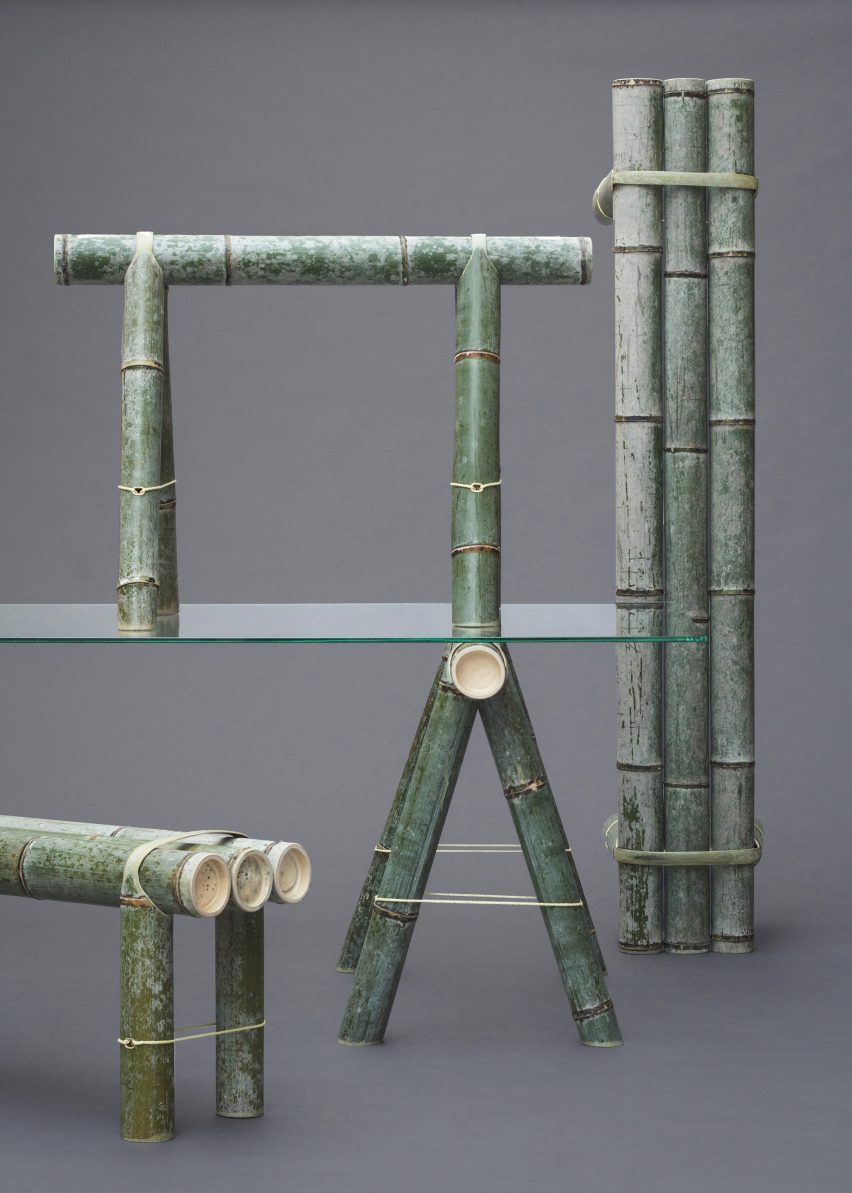
Diez showed the Soba collection, which he designed in 2015, during his talk at the Design Indaba conference in Cape Town earlier this month.
It features a bamboo bench and a pair of trestles that can support a tabletop. Each trunk has been left in its natural state, and the furniture is assembled by threading cords through the canes and tying individual parts together.
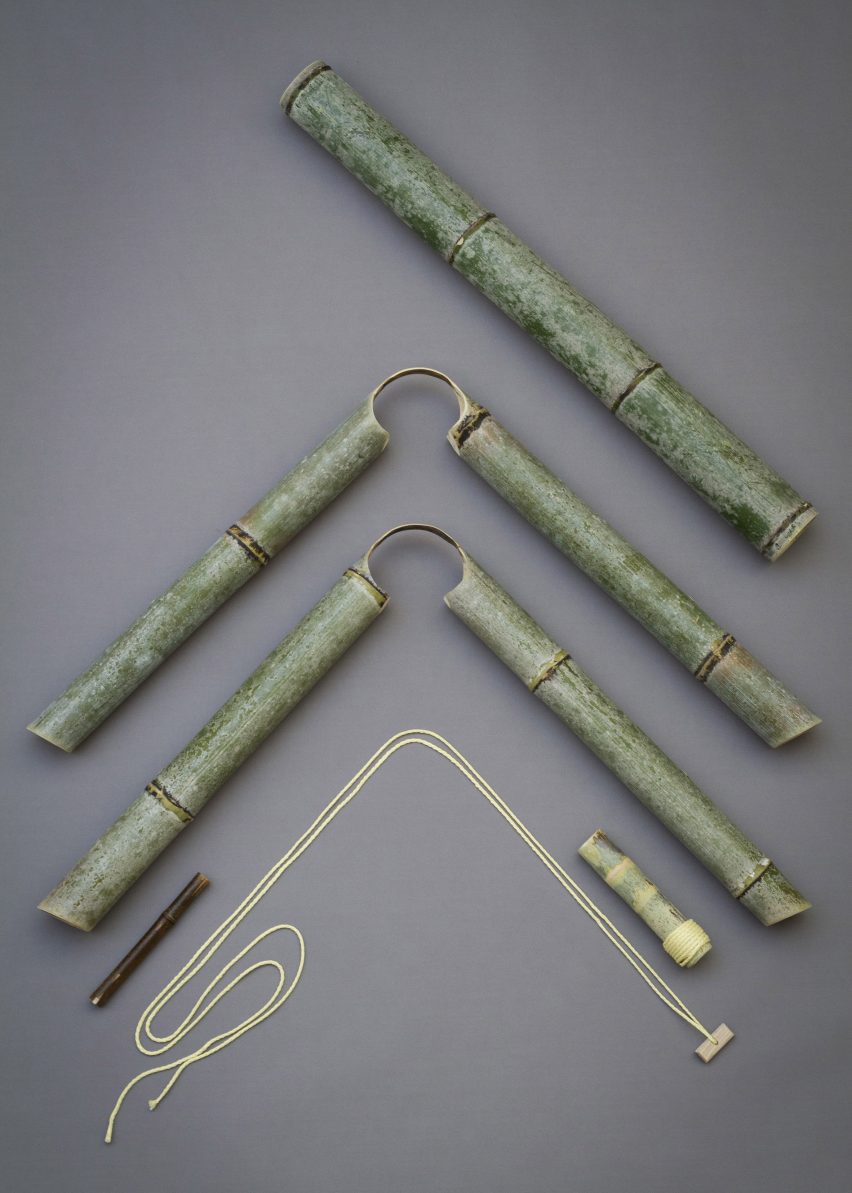
The furniture, which can be delivered flat-pack, uses strong kevlar rope that ends in a wooden handle, allowing joints to be tightened once the pieces are assembled.
Canes for the legs of the trestles have been cut to leave a connecting strip that wraps around the top part.

The Munich-based industrial designer created the series in partnership with non-profit initiative Japan Creative, which emphasises the use of traditional Japanese crafts for contemporary pieces. Each year it invites three designers from Europe and the US to take part in workshops on traditional materials or ways of working.
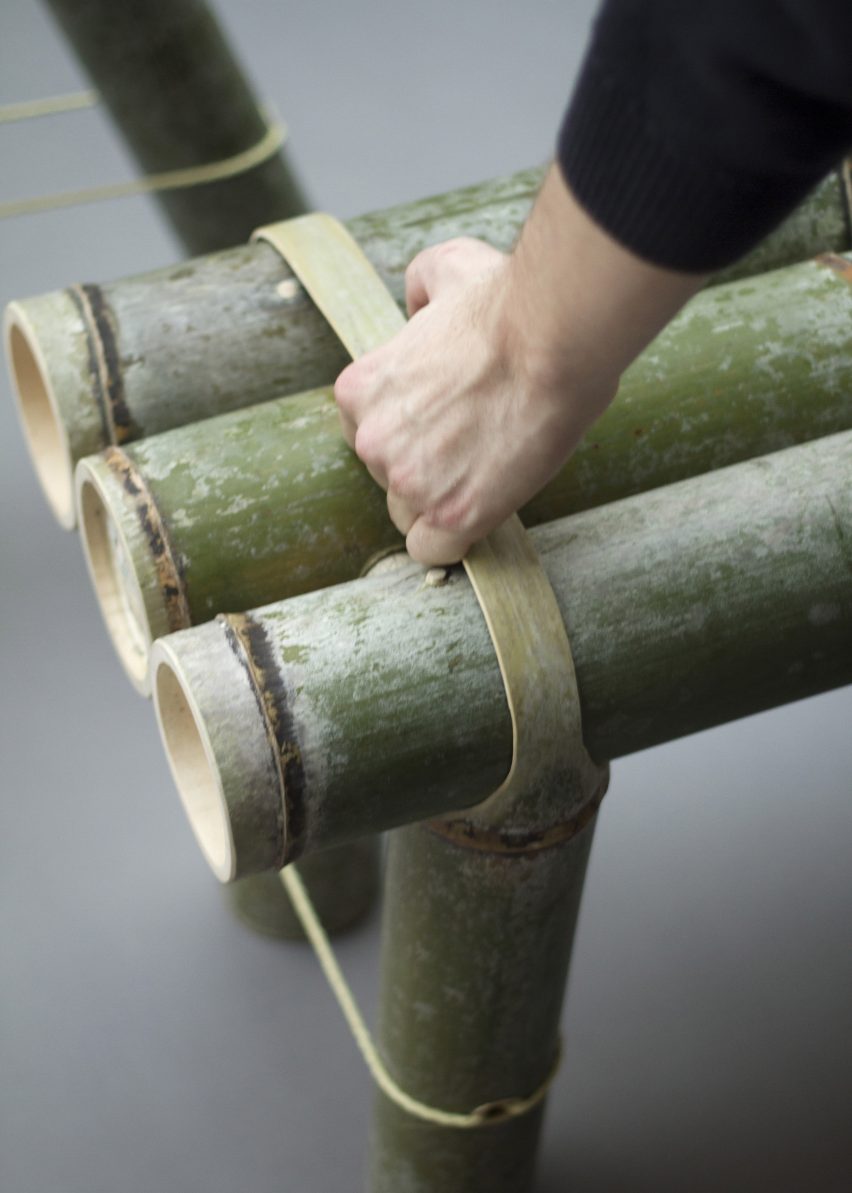
Diez – who has also created experimental office furniture for small workplaces – had the chance to collaborate with a bamboo factory.
He decided to use untreated canes as a contrast to Japan's many uses of processed bamboo – in yarn, brush bristles, or woven baskets, for example.
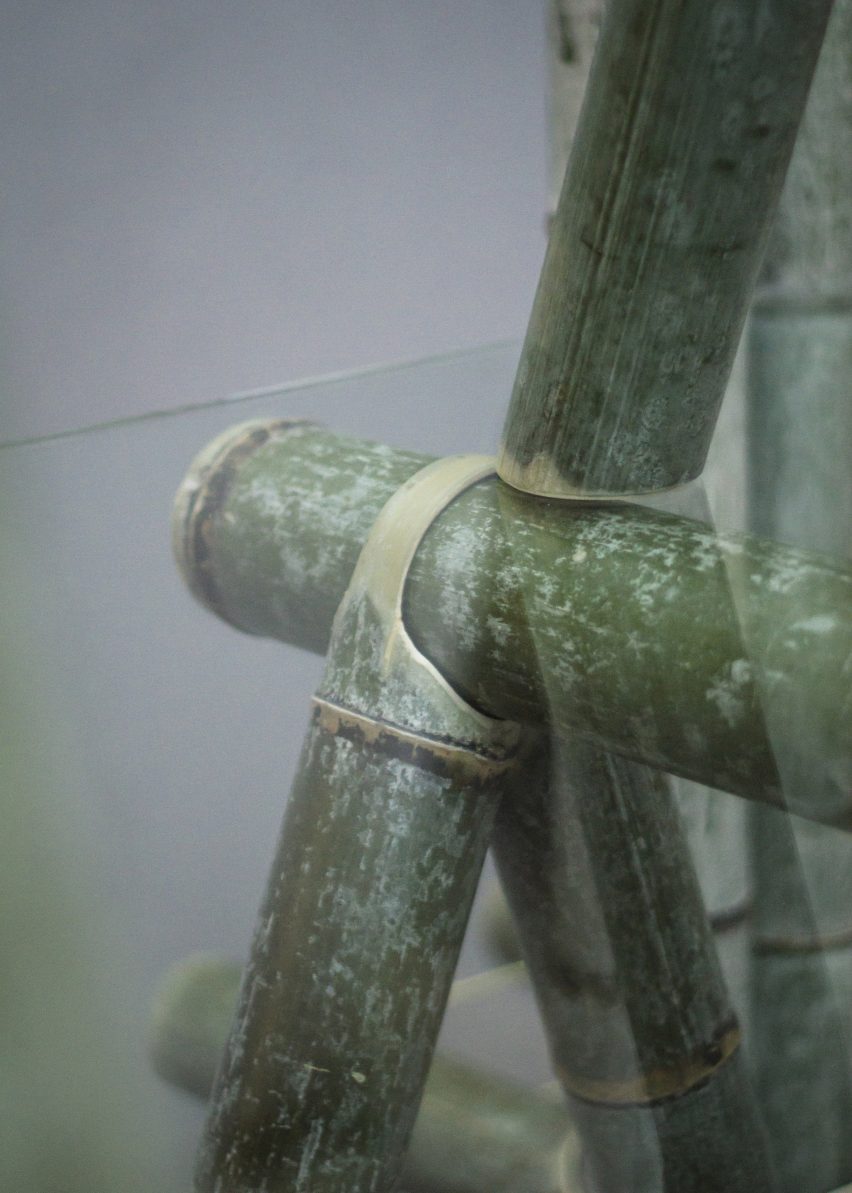
The furniture takes only a few moments to assemble, with its unprocessed surface gradually changing from light green to grey as it ages.
Barber and Osgerby's Hotaru lighting collection similarly borrowed from Japanese history, using an age-old method of making paper lanterns.
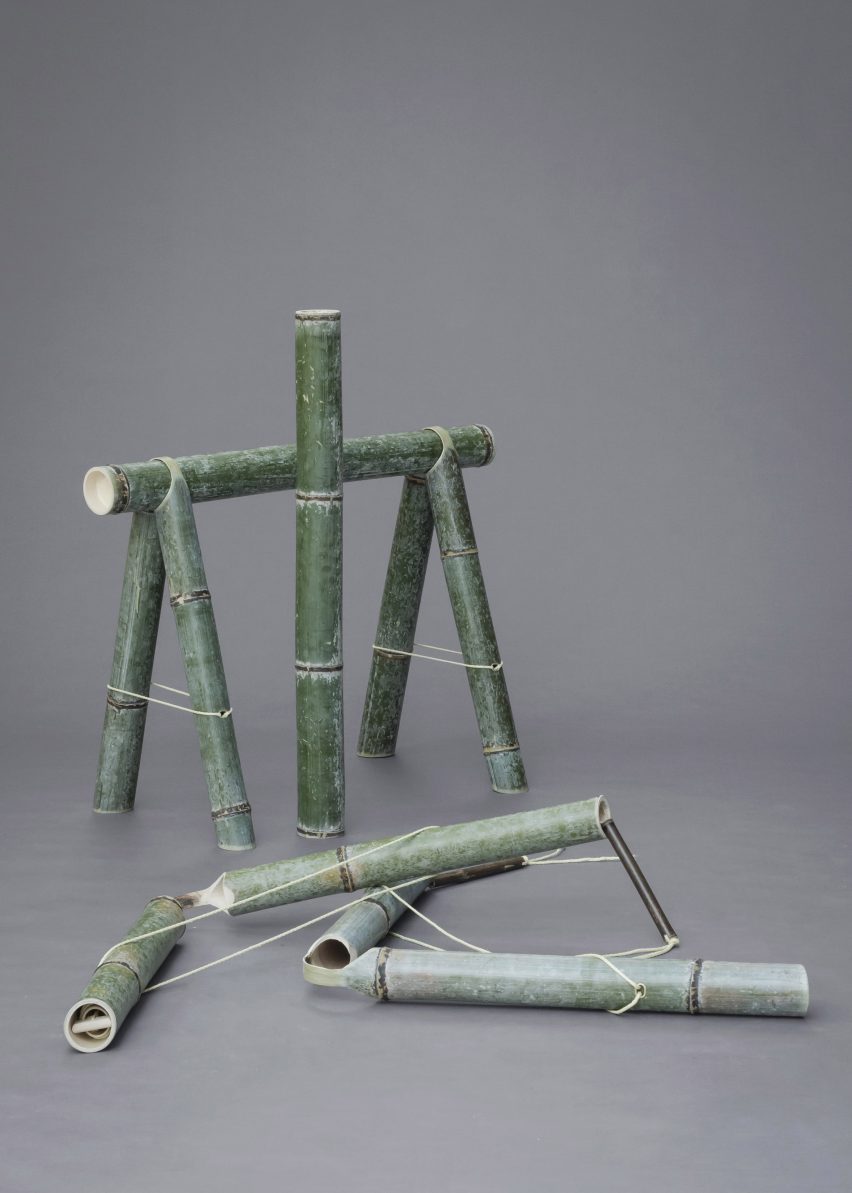
Interest in bamboo as a material, for both buildings and smaller design projects, is increasing. The plant grows rapidly and can be raised without relying on pesticides or fertilisers.
At the World Architecture Festival 2015, Dirk Hebel claimed it could offer a sustainable alternative to steel, and brands including Muuto and IKEA have incorporated it into homeware.
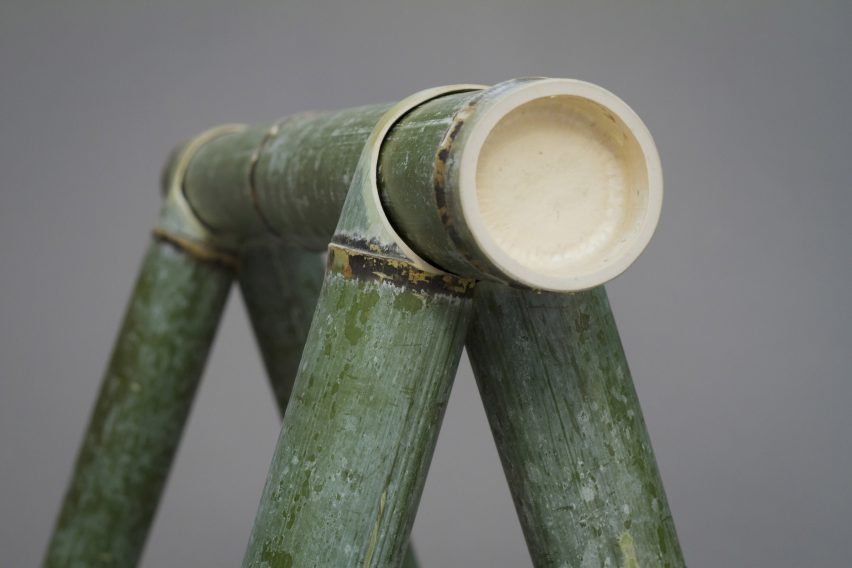
Diez, who has worked as an assistant to both Richard Sapper and Konstantin Grcic, opened his own studio in Munich in 2003. He's collaborated with several brands, designing chairs for German furniture company e15 and office furniture for Hay.
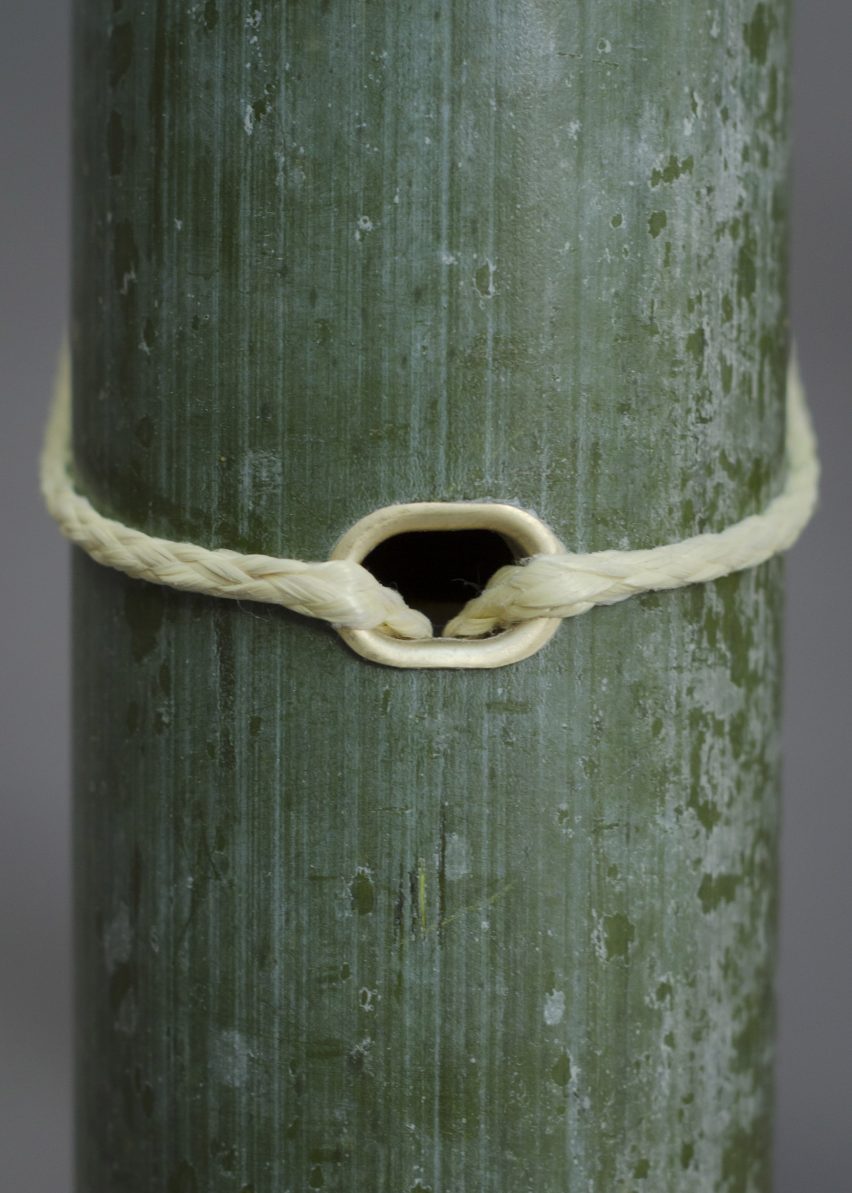
This year's Design Indaba Conference of Creativity took place at Cape Town's Artscape Theatre from 1 to 3 March 2017.
The event saw IKEA unveil plans for its first collection made entirely by African designers and architecture firm Snøhetta show a prototype for a Cape Town arch to be built in honour of Desmond Tutu.
Photography is by Jonathan Mauloubier.